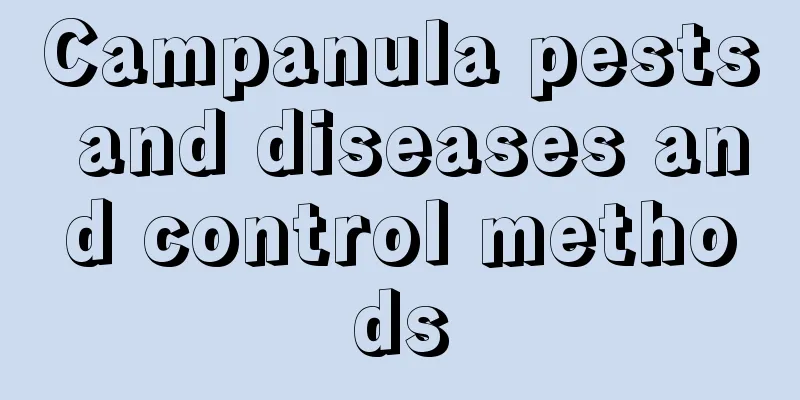Campanula pests and diseases and control methods

Campanula Pests: AphidsAphids usually gather on young buds, leaves and branches to suck sap, causing the affected parts of the plants to shrink and deform. Aphids' excrement is on the leaves and may also induce sooty mold disease. Aphids can be said to be the enemy of every kind of flower. If the environment is slightly unsuitable, aphids can easily take advantage of the opportunity. When a small number of aphids appear on the leaves of bellflowers, it is recommended to wipe the insects off with a rag dipped in soapy water, or rinse them off with a gentle stream of water. When there are many aphids, spray the pesticide once a week for 2 to 3 times in a row. It is especially effective against scale insects and aphids. Campanula Pests: Red Spider MitesRed spider mites usually gather on the back of leaves and are difficult to detect without careful observation. They suck sap from the back of leaves, often causing the leaves to discolor or even bend. By the time you discover red spider mites, the leaves have already turned yellow and wilted. More leaves wilt, and flowering will also be affected, because the photosynthesis of the plant is weakened, the accumulated nutrients are reduced, the flowers become dull in color, and slowly wither. You can use 40% trichloronate diluted with 1000 times water for spraying. Campanula Pests: ThripsAdults or nymphs parasitize plants and feed on young shoots, tender leaves, flowers and young fruits. The affected plants grow slowly, their young leaves bend after being eaten, and their buds and flowers wilt. In the early stage of the disease, 25% dermatophylline emulsion or 40% dimethoate 800-1000 times diluted can be used. Use it once a week for 3 to 4 times in a row, and the effect is significant. |
<<: Diseases of Palm Bamboo and Their Prevention and Control
>>: Common diseases of delphinium and their control methods
Recommend
What fertilizer is good for growing lettuce? What is the best way to fertilize?
Lettuce is a very common vegetable variety in rur...
Is it profitable to grow cacti? What are the profits and prospects of growing cacti?
Is it profitable to grow cactus? Cacti are mostly...
This is how to grow the "aphrodisiac" lily (foxtail lily) in "Legend of Zhen Huan"!
1. Soil Foxtail lilies prefer moist soil, well-fe...
How to prune dahlias
1. Pruning branches Prune dead and diseased branc...
Sunflower Sclerotinia Control Methods
Sunflower Sclerotinia Types Sclerotinia disease i...
How to grow rapeseed to achieve high yield?
Rapeseed is one of the four major oil crops in th...
There is a lot of water in the pitcher plant cage. Is this abnormal?
1. Is it normal? Under normal circumstances, it i...
Grow Christmas cactus in “winter”, feed it with a spoonful of “special water” every 15 days, and the tender leaves and flower buds will emerge at the same time!
This homemade water is a thin fertilizer water ma...
What flowers are suitable for growing in Chengde? What are the city flowers and trees?
1. Climate characteristics of Chengde Chengde has...
Hydroponic aloe vera, spider plant, red palm, green radish...if you don't pay attention to these points, they will die
1. Aloe Vera Because aloe vera plants have thick,...
How to save coriander seeds
Where do coriander seeds come from? Coriander is ...
Planting technology of Fraxinus chinensis
1. Planting time The time for planting at home sh...
The efficacy and function of soapberry
1. Sterilization Soapberry is a natural bacterici...
How long is the growth cycle of a palm tree?
Palm Tree Growth Introduction Palm trees are suit...
How to water winter coral
Water requirements Winter coral's demand for ...









